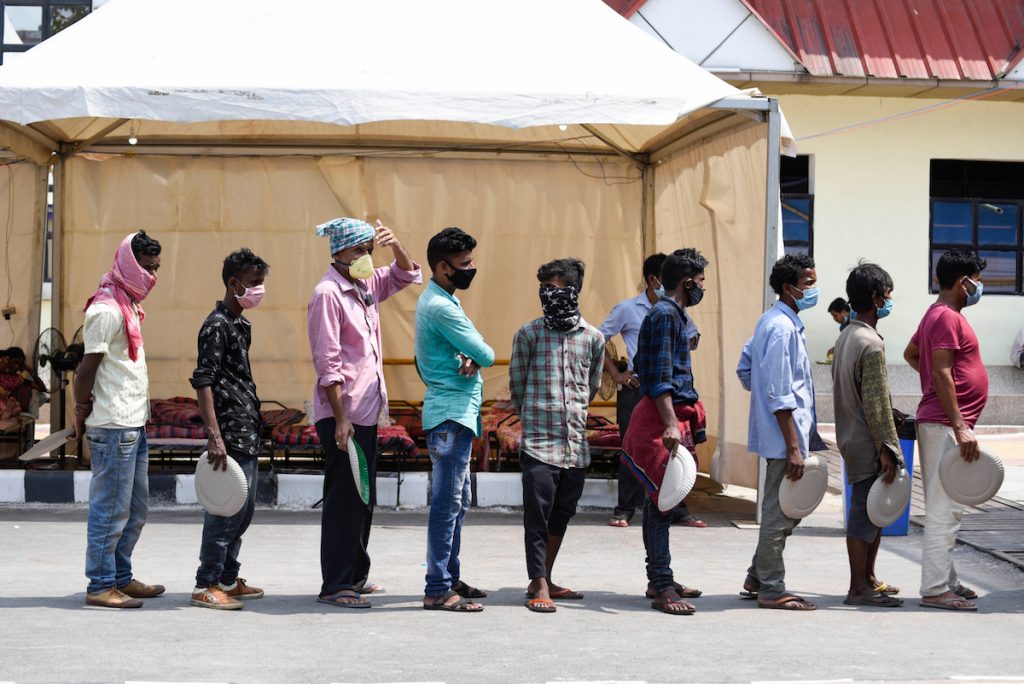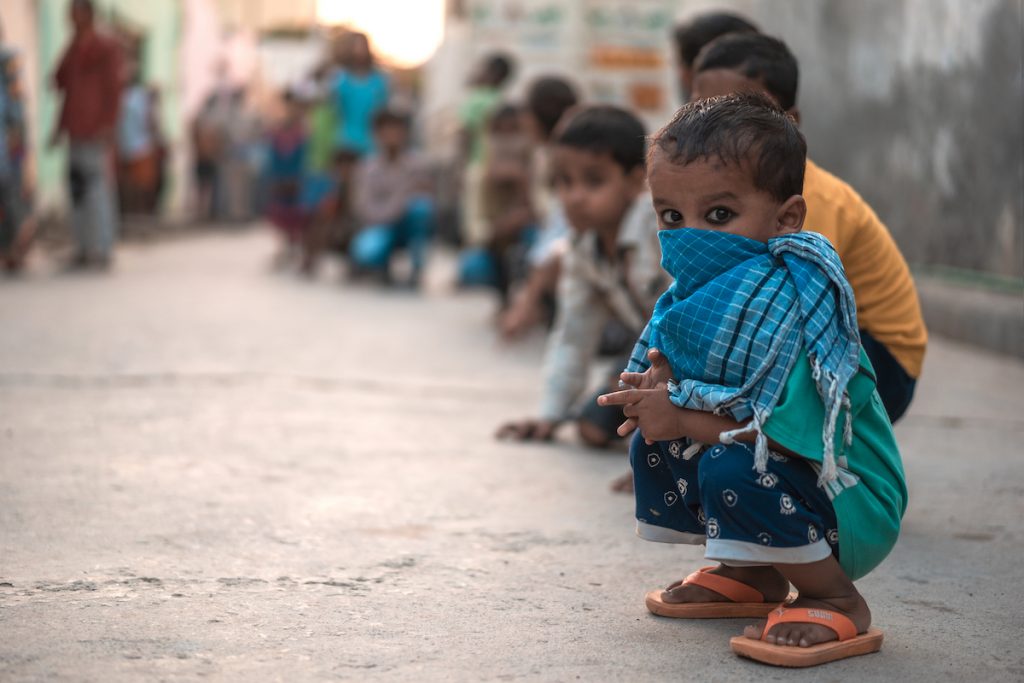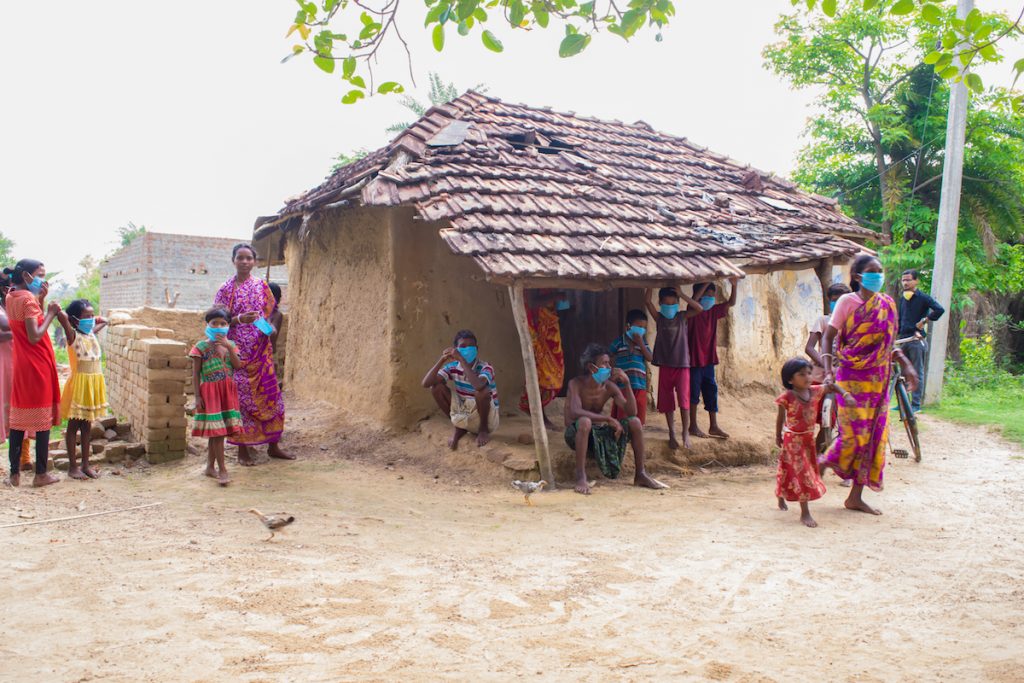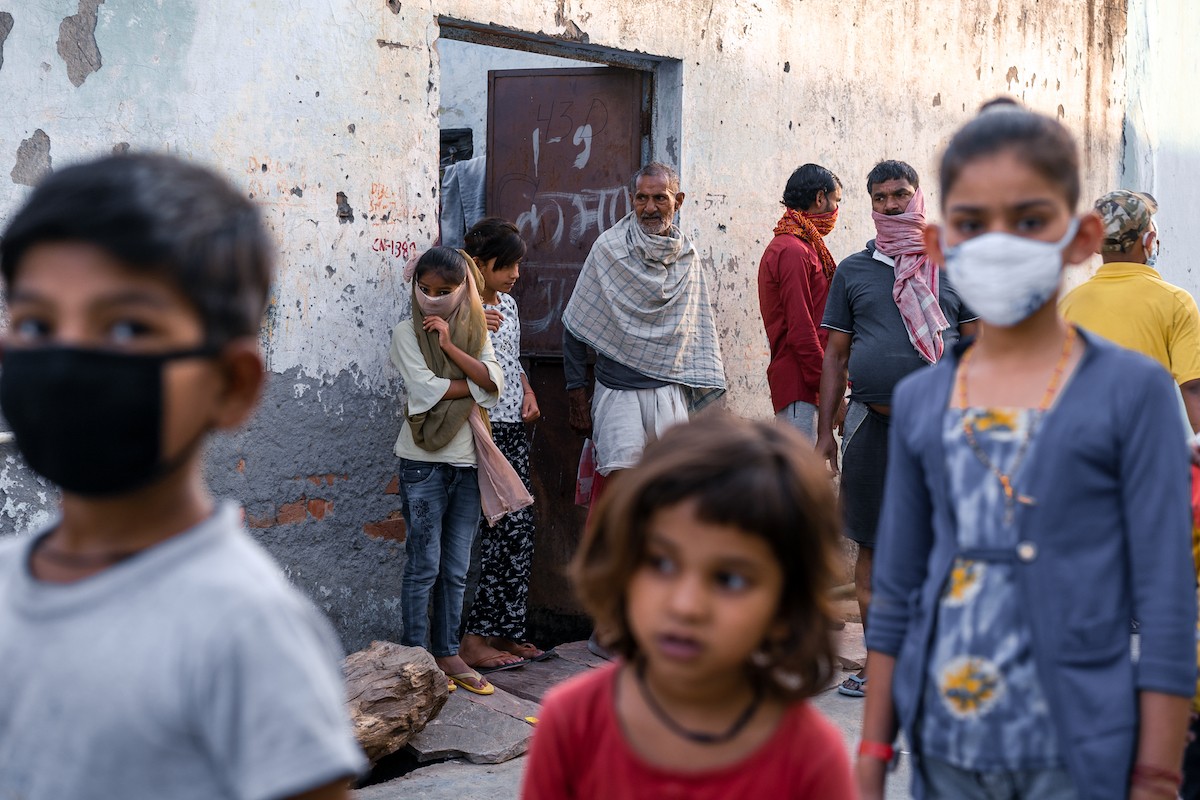Jasoaba Devi struggles to keep her crying daughter quiet. The three-year-old is hungry but there’s not a morsel of food in their home.
“I have nothing to feed her. My husband used to work in a factory, but it closed during the pandemic outbreak. Now we don’t have a means of income,” she said.
Devi’s two sons, who are both below seven years of age, also cry when hunger becomes unbearable.
“We have just a few grains of rice which I boil and feed my children while I just survive on the water drained from the cooked rice,” she said.
Devi and her family are migrants in northern Haryana state’s Nuh village. Her husband has gone out looking for a job. Till he manages to get one, they will have to somehow battle hunger.
The story is somewhat similar in faraway eastern West Bengal state where Nimai Soren and his wife are begging for food. Soren is a daily-wager but now is out of work due to COVID-19.
“We don’t get government rations as we are migrants and our ration card is not valid in this state. Many a night we have to sleep on an empty stomach,” said the 65-year-old who resides in Hatgacha village in East Burdwan district of West Bengal.
Hunger stalks many rural people as jobs have become scarce with the pandemic, said Anand Soren, a social worker in the state.
Due to the pandemic, an estimated 400 million informal sector workers in India are at risk of falling deeper into poverty, according to the International Labor Organization.

Khaoli Kumari, from the central Madhya Pardesh state, said her family is on the brink of starvation as the output from her small farm is insufficient. “The soil is losing fertility and I can’t afford fertilizers and pesticides,” she said.
“Of late, we are not getting subsidized food grains as we do not have an ‘aadhar’ (identification) card that needs to be linked with the ration card. To get one made we will have to shell out Rs 500 (US$ 7 approximately) which we cannot afford,” Kumari said.
Father Irudaya Jothi, SJ, convener of the Right to Food and Work campaign in West Bengal, said the federal government must simplify the technical processes for procuring a ration card and also ensure ‘One Nation One Ration Card’ scheme to help the migrant population.
He said the government should universalize the public distribution system as many deserving families are being left out.
Despite bumper crops and overflowing granaries, India has been ranked a low 94 among 107 countries in the Global Hunger Index (GHI) 2020 with a score of 27.2, indicating a “serious level of hunger”.
According to the report, 14 percent of India’s population is undernourished with a 37.4 percent stunting (low height for age) rate among children under five and a wasting rate (low weight for height) of 17.3 per cent. The under-five mortality rate stood at 3.7 per cent.
India had a food stock of 70 million tons by September 2020, enough to ensure no citizen went hungry, yet in GHI rankings the country is way below its smaller neighbors — Bangladesh (rank 75), Myanmar (78) and Pakistan (88). Nepal in 73rd and Sri Lanka in 64th position are even better off, placed in the ‘moderate’ hunger category.
Purnima Menon, a research fellow at the International Food Policy Research Institute, New Delhi, attributes India’s low rank to the high level of malnutrition in large states like Uttar Pradesh, Bihar and Madhya Pradesh.
Sustainable development goals aim to end all forms of hunger and malnutrition by 2030, but it does not seem possible for India to achieve the target, said Father Jothi.

According to a paper recently published in the journal Food Policy, 76 percent of rural Indians cannot afford a nutritious diet.
Providing quality food grains and increasing its quantity to 10 kilograms per head from the present 5 kilograms and including edible oils and lentils at subsidized rates could ensure nutritious food to the poor, said Father Jothi, who has won many awards for his Right to Food and Work campaign.
Father Jothi emphasised the fundamental rights of life — food and work for the most vulnerable. He said the annual guarantee of work in the Mahatma Gandhi National Rural Employment Guarantee Act (MNREGA) of 2005 should be increased from the present 100 to 200 days per household and wages to Rs 600 ($8) a day for a decent living.
Father Jolly Puthenpura, assistant executive director of Caritas India, said that “though we have surplus food, most smallholder farmers are losing access to food. Almost 50 million households in India are dependent on these smallholder farmers.”
Meanwhile there is also a decline in food production on account of several reasons notably reduced soil fertility, unavailability of water, natural calamities like floods and rising input costs of farming due to which many farmers are leaving the farming sector.
“Due to COVID-19 and economic stress even ordinary people are not able to buy sufficient food grains and vegetables that have become so costly. So, it exacerbates hunger. Economics is affecting consumption patterns,” Father Puthenpura said.
The National Food Security Act, 2013 is in place to ensure food security for the most vulnerable communities but starvation deaths continue.
In June, a 46-year old tribal woman, Dukhi Jani died of starvation in Kaliamba village in eastern state of Odisha’s Nayagarh district.
Starvation has killed more Dalits and tribals than people of other communities in India, according to the Right to Food and Work Campaign.

In the last five years, the country has reported 86 starvation deaths, half of them in 2018 and 2019. As many as 83 starvation deaths occurred among women and children of the Dalit and tribal communities, said Father Jothi.
In an article Professor Himanshu (goes by one name) of Jawaharlal Nehru University wrote: “What is particularly worrying in India’s case is that economic inequality is being added to a society that is already fractured along the lines of caste, religion, region and gender.”
On how hunger could be overcome? Father Puthenpura said: “The answer lies in Pope Francis’ latest encyclical ‘FratelliTutti’ (All brothers) wherein he calls for a better governance system that is more inclusive. People in power should be concerned about everyone — especially the welfare of the weaker sections of society. There should be good schemes to help the poor and the vulnerable to beat hunger and poverty.”







